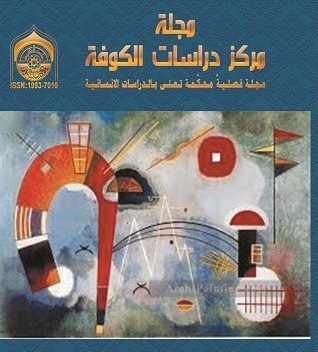ways of persuasion in the discourse of the prophets
DOI:
https://doi.org/10.36322/jksc.v1i69.12552Abstract
The prophecies have taken a clear and precise approach; For the purpose of convincing their people of the messages for which they were sent. And in order for these messages to be acceptable to the recipients, it was necessary for them to explain to those people that they were truly sent from God Almighty, so they would present evidence after evidence in different ways.
The messages were different, including what was divine, such as the Islamic religion, the Christian religion, and the Jewish religion. Including what was not divine, such as the Sabian religion, the Hindu religion, the Manichaean religion, the Mazdak religion, and the Magian religion.
This classification came from the followers; There is no doubt that the prophets started from one lamp and from one method, which is Islam, which is monotheism. But people distort religions according to their whims and interests. And for that, God sends messengers to guide their people. The prophets did their best to reform their people and bring them to the path of truth; We see them agree in their reformist approach. The prophets have unanimously agreed that they do not want a wage for conveying their messages. But the problem they always face is represented in the tyrants who always stand in the way of the prophecies, as they do not want to lose what they are of power, prestige and money, and they do not want to allocate part of the money to the poor.
The prophets used a soft method of persuasion to convince their people without using force or harshness. We see them being kind to the poor, pitying them, and asking them only for what they can. I hope that I will succeed in this research and our last prayer. Praise be to God, Lord of the Worlds, and may God’s prayers and peace be upon the Master of the Messengers.
Downloads
References
- القرآن الكريم .
تحفة النبلاء من قصص الأنبياء ، الحافظ ابن كثير ، ضبط نصّه وعلّق عليه غنيم بن عباس بن غنيم ، تقديم د. السيد بن حسين العفاني ، مكتبة الصحابة ، القاهرة ، ط 1 1998 م .
تفسير القرآن العظيم (ابن كثير) ، أبو الفداء إسماعيل بن عمر بن كثير الدمشقي تحقيق محمد حسين شمس الدين ، دار الكتب العلمية ، منشورات محمد علي بيضون ، بيروت ، الطبعة 1 1419 هـ .
الجامع لأحكام القرآن = تفسير القرطبي ، أبو عبد الله شمس الدين محمد بن أحمد بن أبي بكر بن فرح الأنصاري الخزرجي القرطبي ، تحقيق ، أحمد البردوني وإبراهيم أطفيش ، دار الكتب المصرية ، القاهرة ، الطبعة 2 ، 1384هـ - 1964 م .
جامع البيان في تأويل القرآن المؤلف: أبو جعفر محمد بن جرير الطبري ، تحقيق أحمد محمد شاكر ، مؤسسة الرسالة الطبعة 1 ، 1420 هـ - 2000 م .
سيرة ابن إسحاق (كتاب السير والمغازي) ، محمد بن إسحاق بن يسار المطلبي ، المدني ، تحقيق سهيل زكار ، دار الفكر ، بيروت ، الطبعة 1 ، 1398هـ /1978 .
السيرة النبوية ، أبو الفداء إسماعيل بن عمر بن كثير الدمشقي ، تحقيق مصطفى عبد الواحد الناشر ، دار المعرفة للطباعة والنشر والتوزيع بيروت – لبنان ، 1395 هـ - 1976 م .
السيرة النبوية لابن هشام المؤلف ، أبو محمّد عبد الملك بن هشام بن أيوب الحميري المعافري ، تحقيق ، مصطفى السقا وإبراهيم الأبياري وعبد الحفيظ الشلبي ، الناشر: شركة مكتبة ومطبعة مصطفى البابي الحلبي وأولاده بمصر الطبعة 2 ، 1375هـ - 1955 م .
ديوان أبي الطيّب المتنبّيّ ، بشرح العكبري ، ضبط نصوصه واعدّ فهارسه وقدّم له د . عمر فاروق الطبّاع ، شركة الأرقم ، بيروت – لبنان ، ط1 1997 م .
قصص الأنبياء ومعها سيرة الرسول (ص) ، محمد متولي الشعراوي ، اعتنى به إبراهيم عبد الستار علي و محمد صالح ، دار القدس ، ط 1 2006 م .
لسان العرب ، أبو الفضل ، جمال الدين ابن منظور الأنصاري ، دار صادر - بيروت الطبعة 3 ، 1414 هـ .
معالم التنزيل في تفسير القرآن = تفسير البغوي ، أبو محمد الحسين بن مسعود بن محمد بن الفراء البغوي الشافعي ، تحقيق عبد الرزاق المهدي الناشر ، دار إحياء التراث العربي - بيروت الطبعة 1 ، 1420 هـ .
ملتقى أهل الحديث ، موقع على المكتبة الشاملة يحتوي على خزانة كتب كثيرة .
- موقع أ.د. خالد بن عثمان السبت
Downloads
Published
How to Cite
Issue
Section
License
Copyright (c) 2023 أ.د. رحيم خريبط عطية الساعدي

This work is licensed under a Creative Commons Attribution 4.0 International License.
Permit others to distribute and copy the manuscript, to create extracts, abstracts, and other revised versions, adaptations, or derivative works of or from the manuscript (such as a translation), to include in a collective work, to text or data mine the article, even for commercial purposes, as long as they credit the author(s), do not represent the author as endorsing their adaptation of the article, and do not modify the article in such a way as to damage the author''''s honor or reputation. Further details are found at Creative Commons Attribution 4.0 International (CC BY 4.0)






























